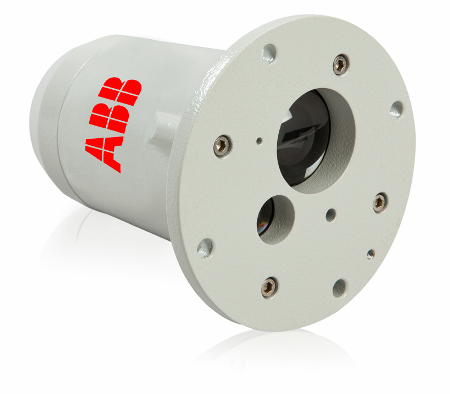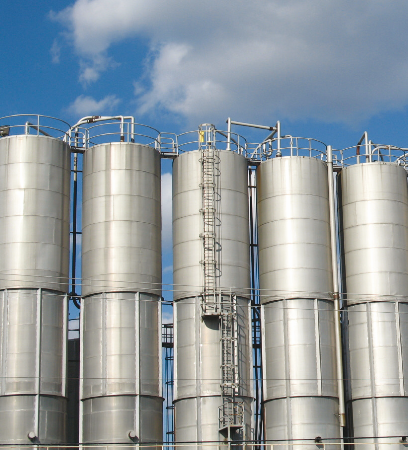The ABB LM80 Laser level transmitter has been highly successful in the manufacturing, conversion and recycling of plastics on storage silos and have been applied to both plastic pellets and flakes. Figure 1 shows the ABB LM80 Laser level.

Figure 1. LM80 Laser Level transmitter
Issues faced with other instruments are as follows:
- Certain customers in the past have tried to use ultrasonic level transmitters, mechanical “yo-yo’s” and load cells with limited success.
- Radar level sensors were found highly unsuitable as the dielectric constant of the product is very low. The storage bins have a considerably small diameter around 3 to 10 m and are tall in height. This is a problem for ultrasonic level transmitters since their wide angle beam echoes off the silo walls and emits a false signal. Furthermore, the material fills and empties with a considerable repose angle and the ultrasonic energy is reflected away instead of back to the receiver.
- Mechanical “yo-yo” devices such as E&H’s Silo Pilot have high maintenance requirements. Several customers have an issue with the plastic pellets covering the weight at the end of the cable and breaking the cable when it is retracted.
- Customers can get an acceptable payback in maintenance savings alone by replacing the “yo-yo” devices.
- Load cells have a significant first cost and high maintenance/calibration costs.
- Nucleonic level sensors can offer a consistent level reading, but these tend to be expensive and contain an undesirable gamma radiation source.
The LM80 offers performance at a competitive price because it has a very small beam divergence (no false echoes off the tank wall) and will measure off of the steep angle of repose. The storage bins are shown in Figure 2.

Figure 2. Plastic storage bins
Recommendations for Installing LM80 on a Plastic Silo
Some recommendations for installing the LM80 on a plastic silo are:
- Use the P801 dust tube option. It is not required to purge with instrument air but on about 5% of the applications, the static buildup is so bad that the dust tubes must be purged to keep dust from collecting on the lens. This problem may be most prevalent when the LM80 is located close to the fill chute.
- A metal mounting plate or flange needs to be used and the same is grounded to the silo. This is normally done by proper bolting and the static build-up is dissipated.
- Lightning protection must be used as the lasers are typically installed on the top of a tall silo out in the open and can act as a lightning rod. It may be necessary to contact the service department for recommended protection.
- The heavy dust program must be used to ignore dust and fines that are suspended in the silo and to ignore feed falling in front of the laser.
A successful demonstration of the LM80 was performed at one plastic manufacturer’s site where the laser was purchased for an extended trial period. There are over 200 silos at this site alone. Plastics are a major potential market for lasers.
About ABB Analytical Measurements
ABB is a leader in power and automation technologies that enable utility and industry customers to improve performance while lowering environmental impact. The ABB Group of companies operates in around 100 countries and employs about 145,000 people.

This information has been sourced, reviewed and adapted from materials provided by ABB Analytical Measurements.
For more information on this source, please visit ABB Analytical Measurements.